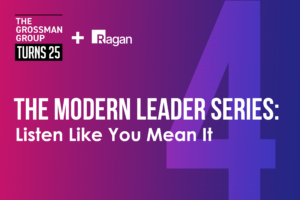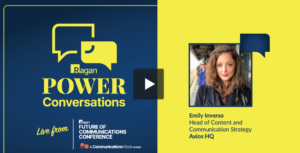Merging digital transformation with employee experience
Blink’s Marcy Paterson on addressing the ‘forgotten transformation’ of your frontline workforce with digital inclusivity.

When optimizing your tech stack to refine the employee experience, how do you ensure that frontline workers aren’t left out of the mix?
During Ragan’s Employee Experience Conference in Nashville last month, Blink. VP of Solutions Consulting Marcy Paterson shared how the employee engagement platform prioritizes frontline workers by facilitating cross-functional collaboration.
“There’s been a lot of investment in digital transformation for knowledge workers, not as much for the frontline, she said. “That’s been an opportunity for us, to lean into that market and try to drive some digital inclusivity.”
Here’s what stuck out.
Transformative collaboration
Paterson often finds herself talking with the Communications, HR, Operations or IT, but believes the real transformation Blink. can help drive is recognizing employee experience is a cross-functional initiative.
“Those folks need to come together to provide more cohesive employee experience for that base, and not look at it as a fragmentation,” she said.
This integrated approach also makes room for a wider view of how your workforce collaborates, too.
“We talk a lot about this bifurcated environment where you have desk-based workers and frontline workers,” said Paterson. “In reality, your desk-based workers are often on the train or at home. Your frontline workers may be in factories and have access to different solutions. You really have to look holistically across all the different roles and functions in your organization and create an organization that marries that.”
Aligning brand with objectives
This lack of collaboration can be jumpstarted if cross-functional leaders are willing to think of the digital employee experience as a mechanism to align the brand with strategic objectives.
Citing the recent news that Workplace by Meta is sunsetting in 2025, Paterson explained how organizations that once used Workplace are now looking more broadly at employee experience to align company expectations with the expectations of younger employees and displaced workforces.
Paterson shared a story about a customer who is trying to bring forward their brand realizing they have an opportunity for Gen Z employees to become mentors for more senior employees who aren’t as comfortable using the technology.
Don’t just see this Gen Z as a demographic you’re serving,” she advised. “Leverage what they know to help drive that next brand generation.”
Paterson shares her advice for budgeting in 2025 and more in the full conversation here:






